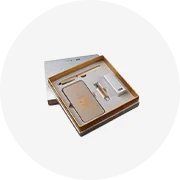Introduction to Sundial Sculpture
A sundial sculpture elegantly combines artistry with functionality, serving as both a captivating garden ornament and a practical timekeeping device. Originating from ancient civilizations, sundials have been used for centuries to tell time using the sun’s position in the sky. Today, they have transformed into decorative pieces that enhance any landscape, marrying the principles of science and art. With a sundial sculpture, you not only invest in a piece of history but also contribute an aesthetically pleasing focal point to your outdoor space.
Types of Sundial Sculptures
- Horizontal Sundials: The most common type, these platforms feature a flat base with a gnomon (the part that casts the shadow) positioned vertically to calculate time. They come in various designs, from simple to intricate sculptures.
- Vertical Sundials: Mounted on walls or upright structures, these sundials are designed for locations with limited horizontal space. They can serve as a beautiful garden backdrop.
- Armillary Sundials: Featuring a series of rings and hoops that represent celestial spheres, armillary sundials take on a more complex design. They are stunningly detailed and often serve as garden centerpieces.
- Garden Sculpture Sundials: These are creatively sculpted pieces that blend art with timekeeping. They can take many forms, from animals to abstract shapes, making them unique artistic expressions.
Applications of Sundial Sculptures
- Garden Decor: Sundial sculptures are perfect for enhancing gardens, patios, and yards, providing a visual statement that also serves a purpose.
- Educational Tools: Useful in educational settings, sundials can help teach concepts of timekeeping, astronomy, and the movement of the Earth.
- Memorials and Commemorations: Many people choose sundials as memorial pieces in gardens or parks to celebrate life, serving both functional and sentimental purposes.
- Event Spaces: In venues like wedding locations or outdoor event spaces, sundials can double as decor and time indicators, enhancing the ambiance.
Features and Advantages of Sundial Sculptures
- Durable Materials: Most sundials are constructed from weather-resistant materials like bronze, brass, or stone, ensuring longevity and resistance to outdoor conditions.
- Eloquent Design: Beyond function, sundials often feature artistic designs that can incorporate various styles, from classical to contemporary, fitting seamlessly into any aesthetic.
- No Power Needed: As a completely natural timekeeping device, sundials require no batteries or wiring, promoting sustainability.
- Unique Gift Option: A sundial sculpture makes for an extraordinary gift that combines history, science, and art, appealing to a variety of recipients.
- Facilitates Mindfulness: Spending just a moment to check the time on a sundial can encourage connection with nature, slowing down your pace in today’s fast-moving world.
























































































































































































































 浙公网安备 33010002000092号
浙公网安备 33010002000092号 浙B2-20120091-4
浙B2-20120091-4